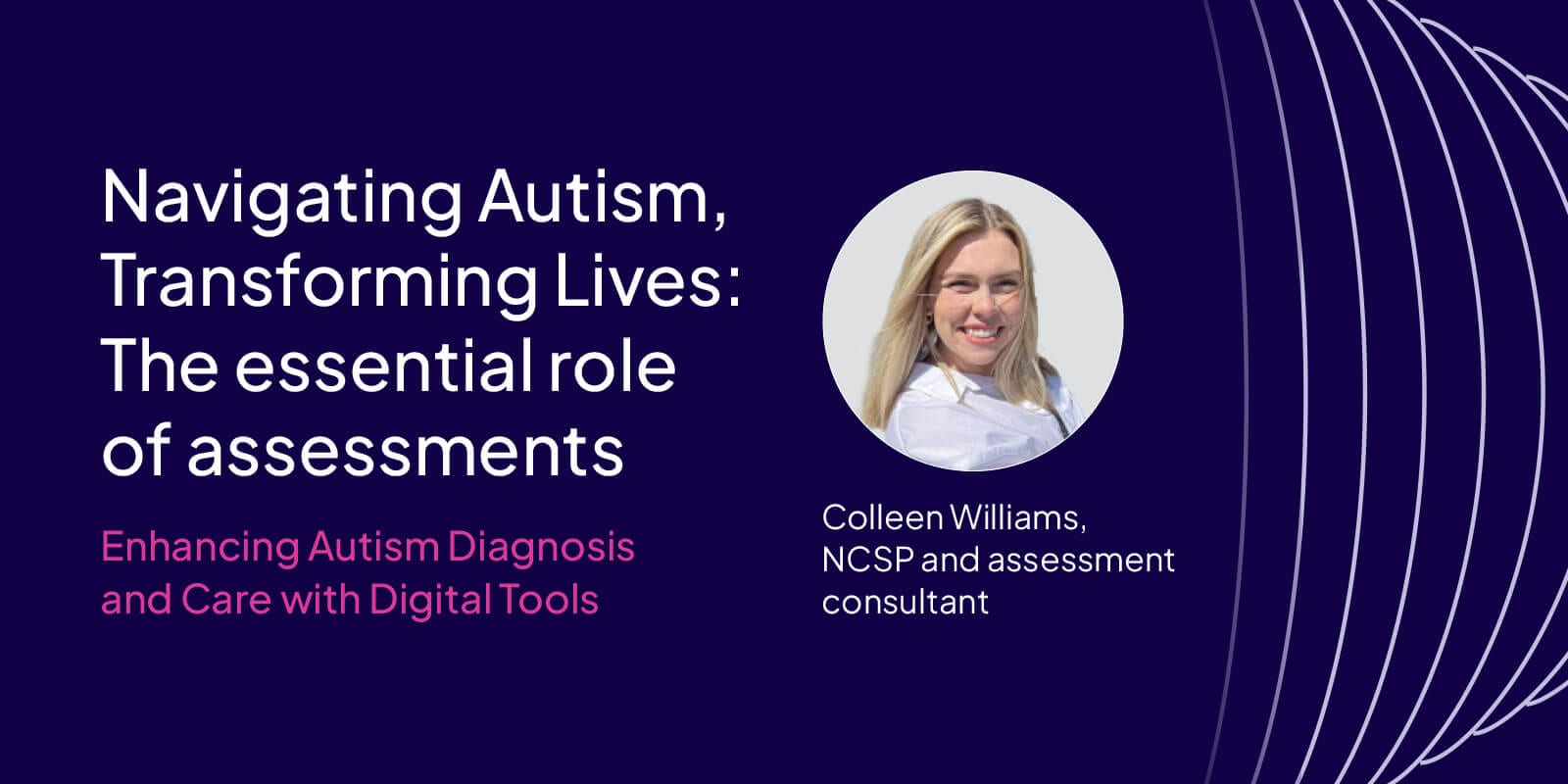Enhancing Autism Diagnosis and Care with Digital Tools
by

Digital tools are at the forefront of autism screening. The potential to improve screening, reduce disparities in screening and intervention, provide information to develop appropriate interventions, and streamline care has made them a go-to resource for clinicians.
“Enhancing Autism Diagnosis and Care with Digital Tools,” the third episode of Pearson's podcast, featured an engaging conversation with Pearson assessment consultant Colleen Williams.
Williams shared her thoughts on the role of digital tools for reducing caregiver burden, how digital tools can support progress monitoring and changing needs across different environments and the benefits of digital scoring for accessing additional metrics that could be valuable in targeting interventions.
The conversation kicked off with a discussion of the benefits of digital tools. Williams shared her thoughts on their utility and accessibility, cost-effectiveness, time efficiency, and the ability to access real-time results through digital platforms like Q-global and Q-interactive.
Digital tools also offer the potential for long-term progress tracking that makes it easier for clinicians to offer valuable insights for continuous monitoring.
The benefits have been made possible as a result of the growing availability of digital assessments for autism that include:
- ASRS (Autism Spectrum Rating Scales)
- BASC-3 (Behavior Assessment System for Children - Third Edition)
- WISC-V / WAIS-V (Wechsler Intelligence Scale for Children / Wechsler Adult Intelligence Scale - Fifth Edition)
- Vineland-3 (Vineland Adaptive Behavior Scales - Third Edition)
- Sensory Profile 2
- Conners 4 (Conners Rating Scales)
With more assessments available, clinicians can choose digital tools that improve the accuracy, efficiency, and accessibility of autism assessments. Williams believes digital versions of performance-based tests like the WISC/WAIS can “engage children more effectively compared to traditional pencil-and-paper methods.”
Pearson includes step-by-step instructions with all of their assessments to ensure accurate administration and maintain fidelity in assessments. Clinicians can be assured that the tools have maximum benefit.
Williams also shared her thoughts on the advantages of digital scoring, noting, “All evaluations require various data points from different settings. Digital assessments allow for multiple modes of delivery, providing clinicians with the opportunity to compare scores across different platforms.”
“By comparing scores from different tools or delivery methods, clinicians may discover that a patient responds better to a digital platform or vice versa, helping tailor interventions for more effective outcomes,” she adds.
For more insights, listen to “Enhancing Autism Diagnosis and Care with Digital Tools,” the third episode in the podcast series, “Navigating Autism, Transforming Lives: The essential role of assessments.”
 Play
Play
